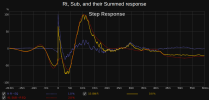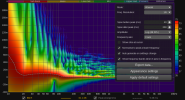Hi,
I read you rcomment in the "How not to set up speakers"-thread and there may be an important psychological thing, you may want to consider:
What is the base of happyness? Being satisfied with what you have.
You can have a yacht, but there surely is someone with a bigger yacht.
You can have the car of your dreams, but there surely is a newer and better one.
And we humans are creatures of habit. That means we tend to take what we have as normal. And the ONLY way to escape that trap, is by actively and consciously remind oneself, what we have got.
Why may that be important for you:
People start to optimize their setups, without knowing what they really want to achieve.
They measure and tweak, but they have no clear picture, of their goal. Then you are on a path of entrapment. You wil end up buying a Porsche and still want more.
While I don't want another car not even as gift. Why? Because I am aware, every time I sit in my car, that I am sitting, my luggage is carried for me, and I will reach my destination dry, warm or cool, independently of the weather.
I am aware, all the time, of what I have. That's the foundation to be happy with my car.
That means, before you do any more tweaking, you must find out, what kind of sound you want to have exactly.
And by that I mean be specific.
For example: I always wanted a warm, wooden sounding room. That was the base. And the woodenpanels gave me the sound, I wanted.
Maybe you a missing the warmth? I only see hard walls in you rroom. I wouldn't feel comfortable in it.
I think that rooms with hard walls sound cold. And putting absorrbers into it, does not create the warm reverb I like.
Maybe that's something you may want to consider. But to do that, you must KNOW, if you miss the warmth of a wooden, diffuse reverb tail.
Or maybe it's something else. You must find out, what specifically you are missing.
Think of the car: I want to move from A to B, independently of any wheather and I don't want to carry my luggage. Give me a 20 year old car, and I am more happy, than anyone with a Porsche, who doesn't know, what he really wants.





